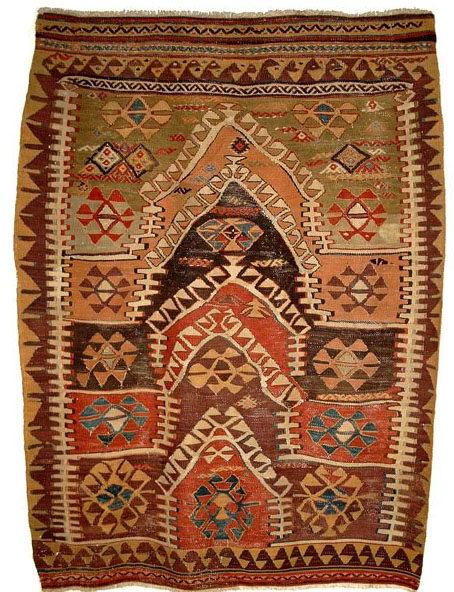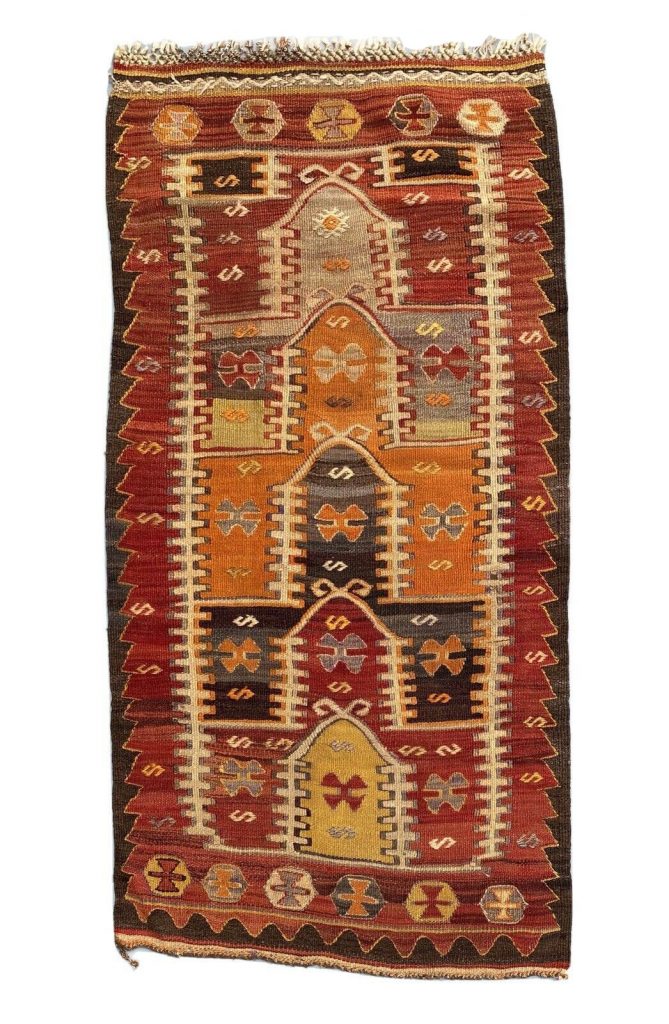
This is a very old and interesting design found in kilim prayer rugs from towns and villages around Konya.
This particular one, once in the collection of late Sonny Berntsson, is believed to originate from Seydishehir.

The design of this kilim is locally referred to as ‘bacali’ from the Turkish word ‘baca’ meaning a chimneystack, and it most often consists of five serrated (stepped) prayer niches atop each other; each niche marked by seven steps on each side.
The upward direction of the niche (the so-called mihrab) represents the symbolic ascend to Heaven. That is quite common in most Anatolian prayer rugs with number seven – the seventh step – representing the seventh Heaven.
There is presumably however another numerological aspect to this design i.e. the number of niches or mihrabs.
The accession to Heaven is possible through prayer as it is evidenced in the actual use of smaller prayer mats often confused with these larger adoration pieces.
The ‘bacali’ design seems to imply more: we can possibly assume that the five niches represent the five pillars of Islam of which five daily prayers are an integral part.
Thus apart from its unquestionable beauty, Sonny Bertsson’s kilim bears a profound religious weight for all those who see their salvation/redemption in Islam.
A.G.

